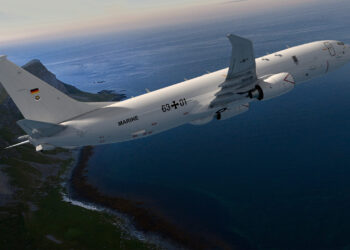Canadian Department of National Defence, Real progress is being made to ensure that the navy is properly equipped to perform a broad range of missions well into the future according to Vice-Admiral Drew Robertson, Chief of the Maritime Staff.
This month alone, the government announced over C$6 billion in naval projects which will strengthen the navy’s ability to serve Canada both at home and abroad. The Halifax-Class Modernization Project will see C$3.1 billion spent to refit and modernize our frigates, while C$3.1 billion will be spent to purchase six to eight new Arctic/offshore patrol ships.
“These two new projects, added to last year’s announcement of the purchase of three new joint support ships, represent a significant investment and show that the government is committed to rebuilding the navy and the Canadian Forces,” VAdm Robertson says. “While I can’t speak to future programs, these recent announcements are certainly important steps to preparing the future navy.”
Calling the Halifax-Class modernization “a crucial link” between today’s navy and the navy of tomorrow, and the new Arctic/offshore patrol vessels “an example of the government’s desire for the navy to more fully enforce our sovereignty in all three oceans”, VAdm Robertson continues to look ahead to ensure the navy is well-positioned for the future.
“Our future navy must remain broadly balanced, while preserving the capacity to deal with strategic shocks and surprises that history has taught us to anticipate,” he explains. “It must be structured to deliver maritime security at home and abroad, as well as to project influence and power from the sea. It will continue to be organized around the naval task group, whose ultimate purpose is to achieve and maintain sea control.”
VAdm Robertson also maintains that the future navy must be of sufficient size to sustain ongoing forward deployments, as well as to retain the capacity to deploy maritime task groups as an immediate national response to emerging contingencies.
“This will require investments over the coming years in our maritime forces,” he says. “Given the complexities of the CF operating in the global littorals, we will need not only to maintain existing capabilities, but also to improve our capacity for joint and combined expeditionary operations in an integrated battle space – including investments in sealift, the capacity to command and sustain land forces from the sea, as well as to support their operations ashore through the provision of joint fires and force air defence.”
To achieve this, other procurements beyond the ships announced over the last year will be needed. In the near term, the most pressing priority will be replacing the command and air defence capabilities of our current destroyers. Over the next 20 to 25 years, VAdm Robertson would like to see maritime forces evolving toward a mix of two littoral manoeuvre ships; three joint support ships; four to six submarines; four task group command/force air defence destroyers; 12 to 14 future frigates; 28 Cyclone maritime helicopters; 16 multi-mission aircraft for long-range maritime surveillance; eight offshore patrol corvettes; four to six coastal defence vessels; eight to 16 internal waters/inshore patrol vessels; and a small constellation of tactical unmanned vehicles remotely piloted or deployed autonomously from our ships and submarines.
Supporting this fleet would be an expanded Naval Reserve with new operational responsibilities in domestic and continental defence missions; world-class dockyards in Halifax and Esquimalt; a training system that fully realizes the potential of simulation and modeling; and a first-rate operational test and evaluation establishment.
“Behind this I also envisage a world-class national maritime technology and industrial base as an essential national strategic capability, enabled by a near-continuous procurement strategy for all government fleets that takes the country away from boom-or-bust shipbuilding,” says VAdm Robertson.
While there is no question in the admiral’s mind that the navy is currently well-equipped and balanced to perform a variety of missions, he wants to ensure that the future navy continues to be capable of working decisively not only in the deep oceans, but also in the world’s coastal areas, where threats can be both conventional and asymmetric.
“I want to ensure that the men and women of the navy have the tools they need to act quickly and effectively against future challenges, including those we can’t see yet,” he says.
VAdm Robertson stresses that “these new projects represent an important step forward in continuing to build capable maritime forces for Canada.”
China says holds first dual aircraft carrier drills in South China Sea
China has conducted its first military drills with its two operational aircraft carriers in the contested South China Sea, state...









